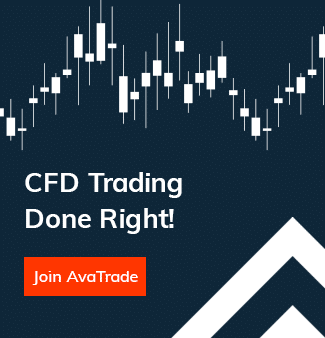
Wheat Trading
Cultivated worldwide, wheat is a grain which has always peaked investor interests, as it is one of the most important food components. Trading wheat CFDs allows traders to participate in the agricultural markets without holding actual tons of wheat.
Start trading wheat CFDs with Friedberg Direct, and enjoy the benefits of trading with a regulated broker!
Wheat trading markets
Wheat commodity trading takes place on several exchanges; however, there are two main exchanges that list wheat futures: the Chicago Board of Trade (CBOT) and NYSE Euronext (Euronext). Wheat futures prices are quoted in USD per bushel.
Wheat trading hours and other trading information:
- Wheat trading hours: 01:00-13:44 and 14:30-19:14 (GMT)
- Minimum trade size: 1
- Contract size: 100 Bushels
- Ticker symbols: Open outcry W (under CBOT) Electronic Symbol: ZW
- MT4 symbol WHEAT
- Price Quote: cents per bushel
- Tick size: 0.25 cents per bushel
Wheat is a predominant food staple and demonstrates stamina in harsh climates. Another advantage of wheat production is that the grain can be harvested in a fairly short amount of time, and there is such a ready supply of wheat.
Coming in second to maize, wheat is a crucial element of the world’s agricultural commodity trading network. These factors contribute to the growing demand for the commodity when trading wheat.
Wheat Price influences
As with every commodity, there are multiple factors that affect the grain market. Weather plays one of the biggest roles in the harvest of wheat. Even though wheat is a robust grain, massive droughts or floods will negatively affect the supply of wheat, which lends itself to increase the harvesting/production process on all wheat products, therefore increasing its price in the market.
Most wheat future charts will show an upward trend in the demand of the produce; however, factors such as a change in government policy regarding import can affect wheat trading and in turn wheat trading prices.
New agricultural technologies can also affect the trading price of wheat as production costs can vary depending on the method of harvesting the grain, hence, creating a surplus of the crop, which could decrease spot prices temporarily. Changes in the demand and prices of competitor commodities, such as corn and rice, will also directly influence the price of wheat.
With the European Union producing 160,012 thousand metric tons of wheat annually, China (130,190) and India (86,530), these are amongst the largest producers of wheat worldwide.
Countries that demonstrate the highest demand and consume wheat are countries that mostly experience high food prices. These are generally poorer countries. The consumption of wheat for livestock in countries that thrive on importing and exporting meat or ‘wheat feeding’ bi-products is also a factor.
It is also worth considering that other competitive products that either decrease in availability or increase price will have a direct effect on the consumption of wheat in any country.
The countries that are the highest consumers of wheat are China with an annual consumption of 124,000 (thousand metric tons), India at a consumption of 123,725 (1000 metric tons), and Australia using wheat for feeding masses of livestock.
Wheat trading tips
Both producers and consumers of wheat can manage wheat price risk by purchasing and selling wheat futures. In this, wheat trading strategy producers will employ a short hedge to lock in a selling price for wheat, while consumers utilize a long hedge to secure a purchase price for wheat.
Traders, on the other hand, will assume the price risk that hedgers will avoid in return for profit from a movement in the wheat price. When prices are believed to increase, traders buy the commodity. The converse is true when speculating a sell. Traders can keep up with changes with this commodity by keeping abreast of the wheat trading news.
Grain trading can also have either a direct positive or negative effect on wheat as a CFD underlying asset. Speculators assume the price of the competitor product will either increase or decrease. This will affect the price of wheat directly.
It is important for grain traders to keep up to date with weather forecasts and political and governmental factors that will directly affect wheat producing countries. This is the best way of gaining a complete understanding of the commodity’s predicted movement within a certain time frame.
Advantages for trading Wheat with Friedberg Direct
- Use leverage on wheat CFD trading
- Trade on a 17.5 hours a day market
- 24/5 technical support
- A regulated broker
- Both MT4 & MT5 trading platforms available
Friedberg Direct is a regulated broker offering top notch service and advanced platform technology.
Wheat Trading FAQs
- Why should I trade wheat?
Wheat is a unique grain in the commodities markets because, unlike corn and soybeans, it is uniquely a human crop. Where corn and soybeans are likely to end up as fodder for animals, the same can’t be said for wheat. This gives it a different price dynamic that can be easier to analyse and trade. Also, because wheat is so widely used, it can be subject to rapid price changes.
- What should I know before I start trading wheat?
There are two types – Chicago Soft Red Wheat and Kansas City Hard Red Wheat. The Chicago contract is the most liquid global wheat contract. Prices for wheat can change rapidly and dramatically for several reasons, including weather and changing demand for wheat-based products. Of the two, the weather is by far more important. Wheat prices are measured in ¼ cent increments. A $0.10 move in the price of wheat equals a $500 change in the price of a single wheat contract.
- What is the best way to trade wheat?
Those who are simply interested in speculating on price changes in the wheat contract should consider trading wheat with CFDs. This allows for speculating on the price of wheat without needing to worry about the complexity of futures and options trading or the extra costs associated with each. Trading CFDs is a quick and easy way to access the wheat markets, plus new traders can get started with smaller initial deposits. That allows them to get their feet wet in this market without needing to worry about potentially large losses.
These FAQs, comments/analysis do not take into consideration your individual personal circumstances and trading objectives. Therefore, they should not be considered as a personal recommendation or investment advice. They are intended for educational purposes only. Past performance is not indicative of future results. There is no guarantee that the contents or instructions will result in profits or not result in losses.







